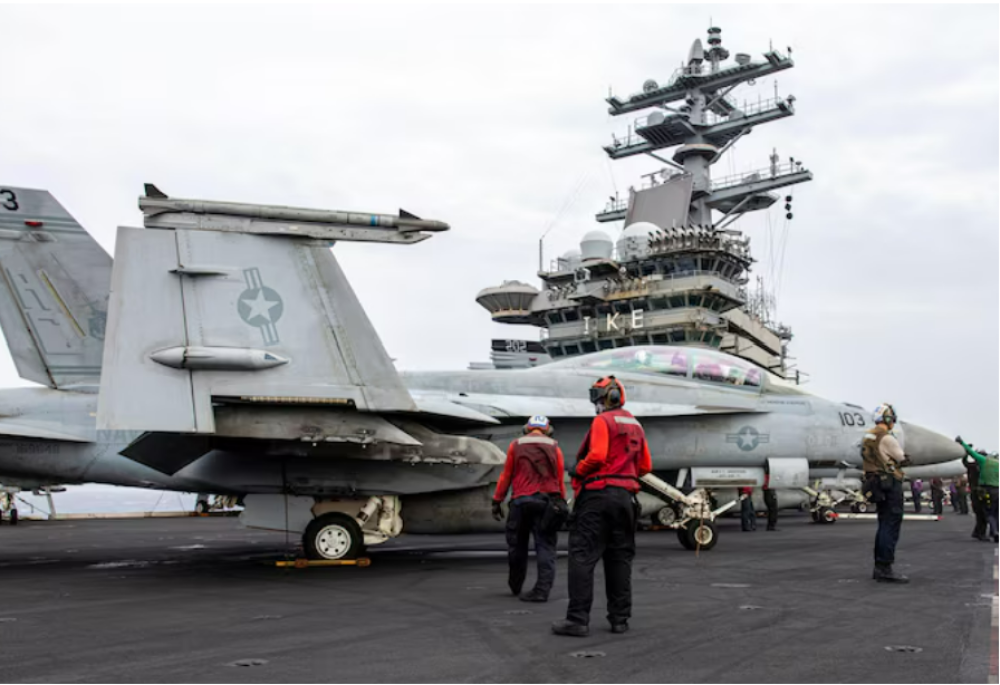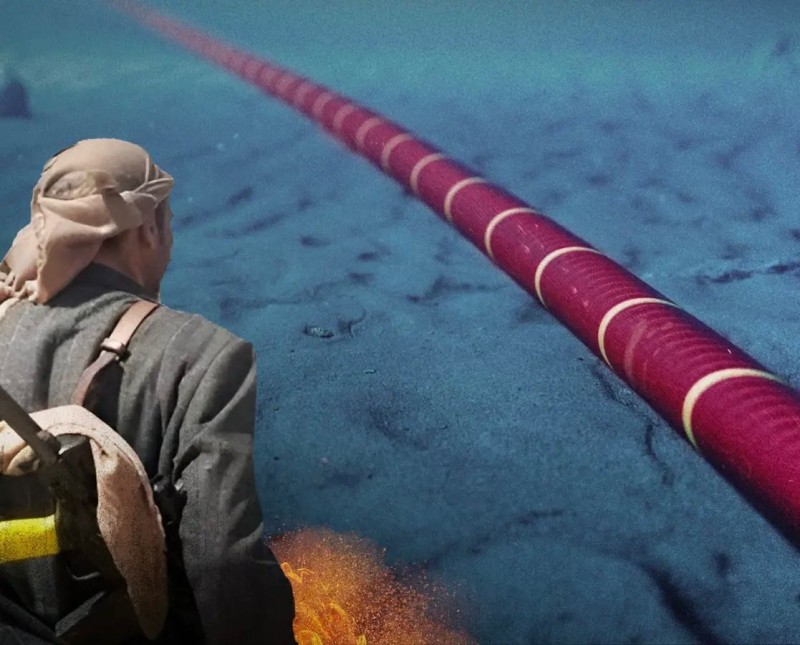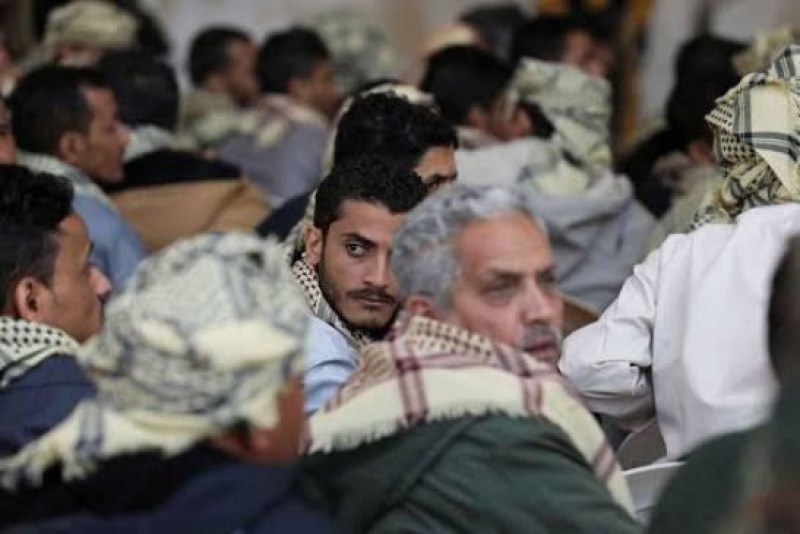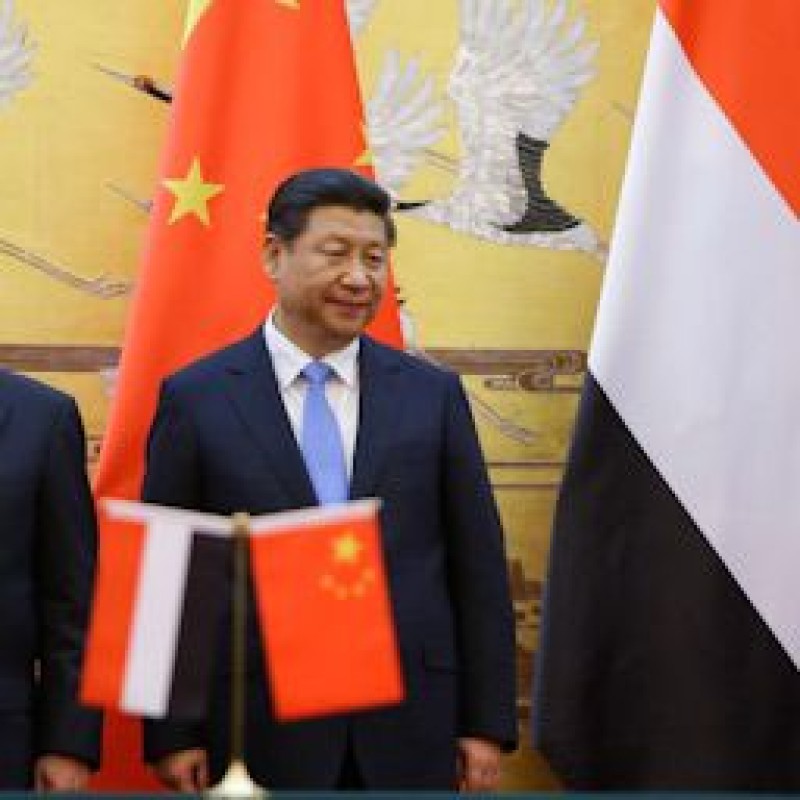Zero-fail mission: Inside the US campaign to stop Red Sea attacks by Yemen’s Houthis


Early Wednesday morning, an alert was put out on the speakers of the Dwight D. Eisenhower aircraft carrier following the detection of a potential drone threat from Yemen’s Houthis.
Sailors and airmen aboard the US aircraft carrier were ordered to be ready to take off within 60 minutes based on intelligence gathered by military assets in the Red Sea. That order was quickly altered so that US forces could be prepared within 30 minutes. Soon, US fighter jets lined up and took off one after the other to foil yet another Houthi attack.
Later that day, the United States Central Command (CENTCOM) revealed that “a coalition aircraft” successfully engaged and destroyed one unmanned aerial vehicle (UAV) and that the US military successfully engaged and destroyed one unmanned surface vessel.
Both were said to have been launched by Iran-backed Houthis from areas of Yemen controlled by the militia. There were no injuries or damages reported to US or coalition ships, but the Houthi weapons were determined to have posed an imminent threat to merchant vessels and US Navy ships in the region.
The Eisenhower, the flagship of Carrier Strike Group Two, has been deployed since October 14, just days after the Hamas attack on Israel. The Hamas attack reignited fighting in a region that US President Joe Biden’s top national security advisor had said just a few days before was “quieter today than it has been in two decades now.”
It remains unclear to the sailors and officers aboard the Eisenhower when they will be able to return home or even see land.
But they believe their mission is worthwhile and that it has been effective. The Houthis began targeting commercial and military ships in the Red Sea, which they claimed had ties to Israel in some way, shape or form. Yet, they have been firing indiscriminately at targets that have no links to the US or Israel. Last Saturday, the Houthis targeted and struck a Chinese-owned and operated oil tanker in the Red Sea with five ballistic missiles.
Houthi militants have attacked or threatened US Navy and commercial vessels over 110 times since November 19, a US military official said. There have been about 50 self-defense strikes from US and coalition forces in response.
The commander of the Eisenhower Strike Group said from a US military perspective, their mission has been “pretty effective.”
“I can quantify that by saying I’ve seen a reduction in their [the Houthis’] activity out here. They had a lot of freedom of maneuver out here, both in the air and the sea,” Rear Adm. Marc Miguez told Al Arabiya English aboard the Eisenhower as it transited in the southern Red Sea.
Washington has carried out dozens of strikes against Houthi targets in Yemen since this January, as well as destroyed drones, missiles, and other Houthi weapons fired into the Red Sea or Gulf of Aden.
Due to the US strikes, which are termed self-defense moves, Miguez said the Houthis’ activity has decreased compared to before the US arrived on the scene.
However, questions have been raised as to how long the US will maintain its presence in the Red Sea, as it does most of the heavy lifting of Operation Prosperity Guardian, the US-led mission formed after the Houthi attacks.
A limited number of countries joined the drive, primarily European, and only one Gulf country. Other nations have provided intelligence and logistical support but have asked that their participation not be made public.
No help from China
US officials have publicly and privately told China to help in its efforts in pressurizing the Houthis to stop attacking ships in the Red Sea. The Financial Times reported recently that secret talks were held between high-ranking Biden administration officials and Iranian counterparts for the same reason.
Miguez said there had been no communication with the Chinese military, though, about any help. Although China has a military presence in the Red Sea, primarily for counterpiracy operations, it has not assisted ships asking for help.
“They’ve been nearby when ships have been attacked. And I will say none of them have offered to assist any of the innocent merchant traffic that has been attacked,” Miguez said.
US can stay in Red Sea for as long as needed
Miguez said the US can stay for as long as needed and restock and refit. “And we routinely do that at sea, without requiring any kind of port visit. Although we have utilized some port visits for our smaller ships, we can maintain this presence in this posture for a long time,” he told Al Arabiya English during an interview.
Following more than 160 days since leaving the US and more than 140 days of deployment in the Red Sea, Miguez said the sailors and officers were recently able to “take a knee and take a break” to move into a more self-defensive posture.
Biden administration officials estimate early summer as a realistic timeframe for the strike group to return home to Norfolk.
“This is something that’s not normal,” he said of the lengthy deployment. Sailors aboard the Eisenhower left the US on October 6 for planned port visits from France to the Mediterranean, but then the call came from the Biden administration to head to the coast of Israel and Lebanon to deter Iran-backed groups, including Hezbollah, from opening a second front against Israel.
Since moving into the Red Sea, the US military has done everything, from defending against attacks to protecting merchant ships through international waters.
The commander of the Eisenhower, Capt. Christopher “Chowdah” Hill, said there was a philosophy the senior officers and officials tried to institute on the ship, called “the way of the warrior sailor.”
“The hypothesis is if we can improve morale to some degree, we’re going to have better combat success. We’ll also have success in other areas, for example, mental health, resiliency or doing well on inspections,” Hill told Al Arabiya English.
Some carriers, including US ships, have requested US military escort. Some of those escorts have been done in tandem with coalition partners. The Eisenhower strike group has also provided information to ships that come through the Red Sea and the Gulf of Aden regarding certain risks.
Eye on Houthi targets
Capt. Marvin Scott, the commander of the carrier air wing’s eight squadrons of warplanes, said the US has actively defended itself since the Houthis attacked them on December 31 and coalition forces on January 9.
“What that [self-defense] entails is us launching aircraft every day that are on call and actively investigating, looking for threats to the carrier strike group,” Scott said.
The Eisenhower carries F/A-18 Super Hornets, E-2C Hawkeyes, EA-18G Growlers, helicopters, and others. Carrier Strike Group Two also includes a guided-missile cruiser, the USS Philippine Sea, and four guided-missile destroyers used for anti-air and submarine warfare.
More than 4,000 sailors are on board the Eisenhower, and hundreds more are on the destroyers and guided missile cruiser.
On the Houthi threats and capabilities, Scott said they had made significant technological progress in their anti-ship ballistic missiles. “So that is probably the number one threat out here.”
The Yemeni group, which the Biden administration re-designated as a terror group after quickly revoking the Trump administration’s move to do so, has also put together “some impressive swarm attacks with one-way attack drones,” Scott explained.
However, the US military has “significant capability” to defend against these attacks and has continuously improvised in recent months.
The ship’s executive officer, Capt. Colin Price, dubbed the Eisenhower’s role as “a zero-fail mission.” He added: “We have to be perfect.”
In the early days of the campaign to deter the Houthis, the US military was going after their air surveillance radars, which, after being destroyed, allowed the US to have more freedom of maneuver to degrade enemy capabilities.
Following this phase, the focus was primarily on weapons facilities, their ability to deploy weapons, and their ability to command and control those weapons used against merchant vessels and military targets.
Scott concurred with the assessment that the US had significantly degraded Houthi capabilities. “We have dropped hundreds of bombs on military targets, significantly degraded their capability, and I think we have also seen a decrease in their offensive actions in the last couple of weeks,” he said, adding: “Their ability to wage war has been reduced by our actions here.”
The goal of the US military is to return freedom of navigation to the waters in the region, but they are capable of staying “as long as it takes to do that.”
Scott also praised the large group of relatively young sailors deployed for the current mission. “It’s pretty impressive to see 18 to 24-year-olds out here doing this very, very hard job every day, the heat, the grease and the dirt.”
“So, it’s important for people to recognize that we don’t just make this happen. A lot of hard work goes into it,” he concluded.

A new media report has revealed that Google is embarking on a major subsea cable initiative, dubbed Blue Raman, in a strategic move to establish a…

Muscat – Thousands of Yemeni families are anxiously watching the ongoing prisoner exchange talks in Muscat, Oman, hoping for a breakthrough t…

RIYADH — China has reiterated its steadfast position in support of Yemen’s unity, sovereignty, and territorial integrity, underscoring…